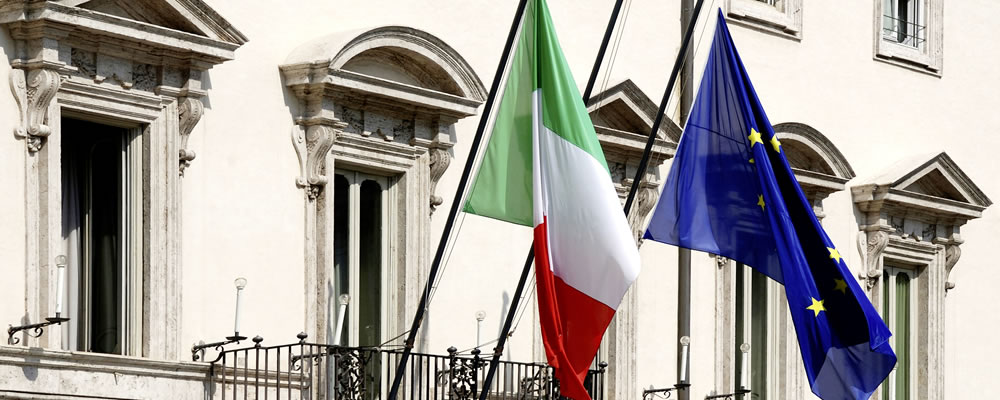Euro to US Dollar Exchange Rate Kept Under Pressure by Political Uncertainties
Since last week, the Euro (EUR) has been sold as investors digest a weaker Eurozone economic outlook and this week so far the Euro to US Dollar (EUR/USD) exchange rate has been dragged even lower by revived Italian political jitters.
A brief spot of US Dollar (USD) weakness caused by US Mid-Term Elections was short-lived last week, as EUR/USD fell from last week’s high of 1.1496 and closed at the level of 1.1338.
Since markets opened this week, EUR/USD has tumbled further. On Tuesday morning, EUR/USD trended near Monday night’s fresh yearly low of 1.1217.
Investors have been hesitant to buy the Euro amid concerns about worsening political tensions between Italy and the EU. This made it easier for the safe haven US Dollar to push EUR/USD lower.
As well as safe haven demand, the US Dollar has found support in the hawkish stance the Federal Reserve took in its November monetary policy decision last week.
Euro (EUR) Exchange Rates Unappealing as Italian Political Jitters Take Focus
A few weeks ago, the EU rejected Italy’s budget proposal as Italy’s budget contained plans for more spending and borrowing than the EU typically allows.
The EU noted that Italy had until the 13th of November to come up with a more acceptable budget – but that day has come and Italy’s government doesn’t appear to have shifted its stance.
Italy has shown no signs that it will announce any changes to its budget, having thus far stuck to its guns. Most analysts also don’t expect any changes from the Italian government either.
According to Paolo Pizzoli, Senior Economist at ING, the Italian government may still look to slightly soften its stance:
‘We don’t expect the government to amend its 2.4% deficit/GDP target, often considered as the unmovable political standpoint. However, on the back of poor data releases, we believe the new draft might include less optimistic GDP projections and/or the inclusion of automatic spending cuts to ensure that the 2.4% target is an absolute maximum.’
Demand for the Euro was little-affected by this morning’s final October inflation rate stats from Germany, which simply met expectations at 2.5% year-on-year and 0.2% month-on-month.
US Dollar (USD) Exchange Rates Hold Gains on Federal Reserve Policy Outlook
While the US Dollar is typically strong amid weakness in the Euro, its biggest rival, the US Dollar has also seen additional support from recent US data and news.
Last week, US data continued to indicate that the US economy was performing strongly.
This, as well as a hawkish tone from the Federal Reserve in its November policy decision, helped the US Dollar to quickly recover from the losses seen in response to the US Mid-Term Elections.
The Federal Reserve’s tone was unsurprising, but as the bank signalled it would hike US interest rates again in December and then at least twice more in 2019, the US Dollar still recovered in relief.
Euro to US Dollar (EUR/USD) Exchange Rate Investors Anticipate Italian Political Developments
While it seems like Italy does not plan on making any significant changes to its budget proposals, this has more or less been priced into the Euro to US Dollar (EUR/USD) exchange rate already.
Instead, EUR/USD investors are eager to see how the EU will react to Italy’s refusal to change its stance. Depending on the severity of the EU’s reaction, the Euro could plummet.
The EU could impose sanctions if Italy does not make a budget plan that the EU approves of.
Worsening tensions between Italy and the EU may also worsen Euroscepticism in Italy and the perceived chances that Italy could choose to leave the Eurozone.
On the other hand, if the Euro’s reaction is not as bad as feared or if the two are able to reach some kind of agreement, EUR/USD could recover some of this week’s losses.
Upcoming Eurozone and US data has the potential to cause currency movement. Q3 growth projections from Germany and the Eurozone, as well as French inflation data will be published on Wednesday.
US inflation stats from October, due during Wednesday’s American session, could also influence the Euro to US Dollar (EUR/USD) exchange rate.



